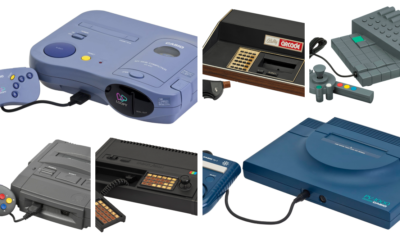Computers
The Rise and Legacy of the Atari ST: A Game-Changer in Computing History

Hey there, retro tech enthusiasts! Today we’re taking a trip down memory lane to revisit the iconic Atari ST computer. If you were around in the 80s and 90s, chances are you had one of these babies in your home. And if you didn’t, well, buckle up because we’re about to take you on a wild ride.
First things first: let’s talk about the specs. The Atari ST, released in 1985, was powered by a Motorola 68000 processor clocked at a whopping 8 MHz. It came with a built-in MIDI interface (perfect for all you music lovers out there) and was available in three models: the 520ST, the 1040ST, and the Mega ST.
The 520ST featured 512 KB of RAM and a single-sided floppy disk drive, while the 1040ST boasted a whopping 1 MB of RAM and a double-sided floppy disk drive. The Mega ST, released in 1987, took things to the next level with a 10 MB hard drive and up to 4 MB of RAM.
But enough with the technical talk, let’s get to the fun stuff. The Atari ST was a revolutionary machine that allowed users to do everything from playing games to creating music and graphics. Speaking of games, the ST was a major player in the gaming industry during its heyday. It was home to classic titles like Dungeon Master, Speedball, and Bubble Bobble, just to name a few.
And let’s not forget about the iconic game Lemmings, which was originally released on the ST in 1991. This puzzle-platformer quickly became a hit and was eventually ported to virtually every gaming platform out there. But it all started on the Atari ST.
But gaming wasn’t the only thing the ST was good for. Its built-in MIDI interface made it a favorite among musicians and producers. In fact, the ST was so popular in the music industry that it inspired the creation of a specialized version of the computer called the Atari Falcon, which was designed specifically for music production.
But that’s not all. The ST was also a powerhouse when it came to graphics. Its high-resolution monochrome display made it a favorite among graphic designers and artists, and it was even used to create some of the earliest computer-generated special effects in movies like The Last Starfighter and Tron.
But like all good things, the Atari ST eventually faded into obscurity. The rise of IBM-compatible PCs and the Macintosh ultimately led to the demise of the ST, and Atari officially discontinued the line in 1993. But even though it’s been nearly three decades since the ST was last produced, its legacy lives on.
The Atari ST was a machine that paved the way for the modern computing world. It was a game-changer in every sense of the word, and it will always hold a special place in the hearts of those who grew up with it. So if you happen to stumble upon one of these relics at a garage sale or thrift store, snatch it up and give it a spin. Who knows, you might just discover a newfound appreciation for the technology of yesteryear.
In conclusion, the Atari ST was an absolute beast of a machine that set the standard for gaming, music production, and graphic design during its time. While it may not have the same level of recognition as some of its contemporaries like the Commodore 64 or the Apple II, the ST’s impact on the computing world cannot be overstated. So here’s to you, Atari ST. You may be gone, but you will never be forgotten.

-

 Entertainment4 years ago
Entertainment4 years agoModern Technology with Not-so-Modern Origins
-

 Health And Wellness4 years ago
Health And Wellness4 years agoSigns And Symptoms Of Cancer All Men Should Be Aware Of
-

 Entertainment3 years ago
Entertainment3 years ago10 Examples of the Mandela Effect
-

 Fashion4 years ago
Fashion4 years agoHow To Cut And Style Men’s Hair At Home
-

 Gaming5 years ago
Gaming5 years ago10 Failed Consoles You’ve Probably Never Heard Of!
-

 Gaming5 years ago
Gaming5 years agoTop 10 Atari 2600 Racing Games
-

 Tech4 years ago
Tech4 years agoFuturistic Features Coming Soon To Smartphones
-

 Sports3 years ago
Sports3 years agoSimple Outdoor Tasks and How To Do Them Right